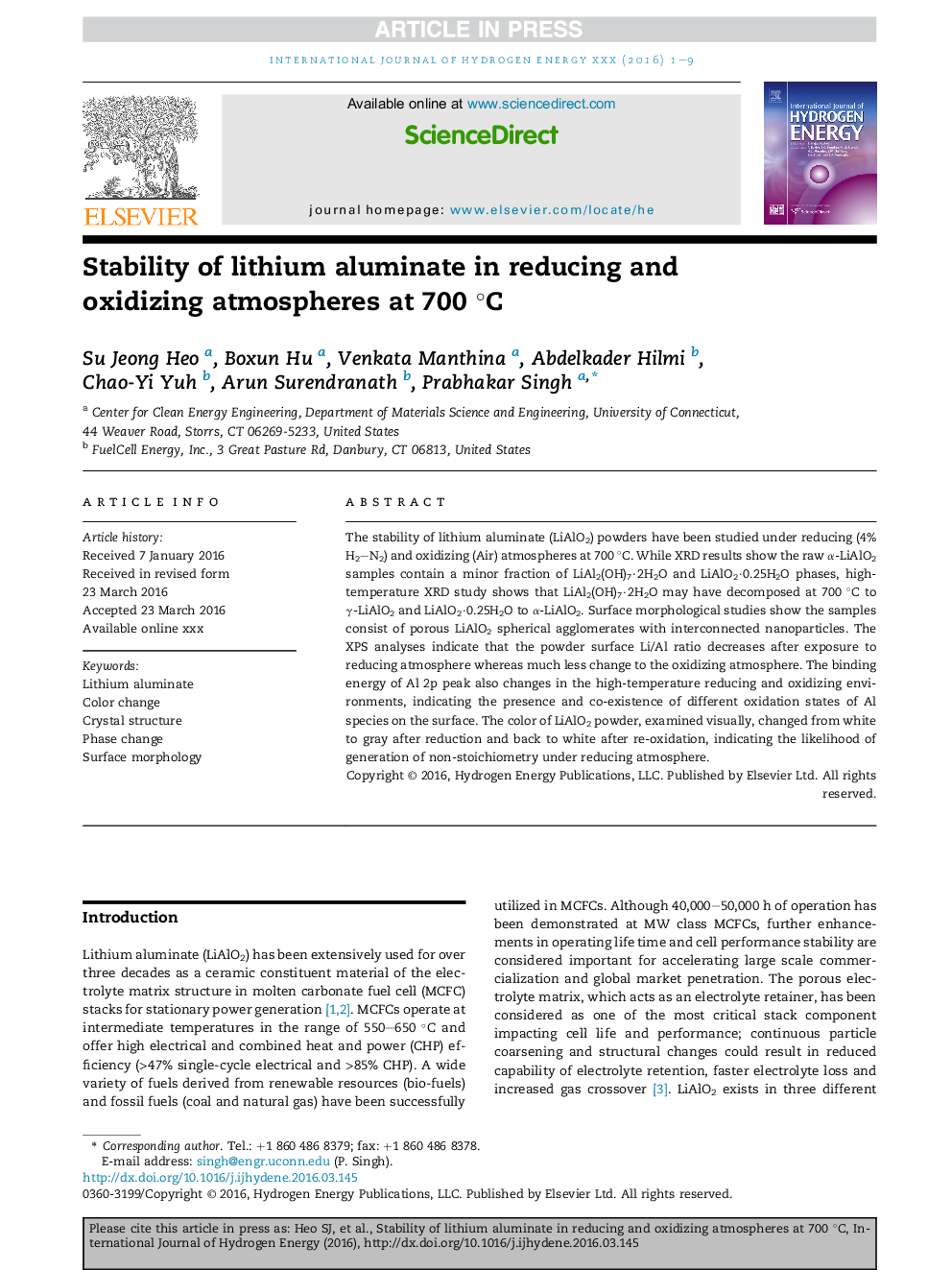| Article ID | Journal | Published Year | Pages | File Type |
|---|---|---|---|---|
| 5147437 | International Journal of Hydrogen Energy | 2016 | 9 Pages |
Abstract
The stability of lithium aluminate (LiAlO2) powders have been studied under reducing (4% H2N2) and oxidizing (Air) atmospheres at 700 °C. While XRD results show the raw α-LiAlO2 samples contain a minor fraction of LiAl2(OH)7·2H2O and LiAlO2·0.25H2O phases, high-temperature XRD study shows that LiAl2(OH)7·2H2O may have decomposed at 700 °C to γ-LiAlO2 and LiAlO2·0.25H2O to α-LiAlO2. Surface morphological studies show the samples consist of porous LiAlO2 spherical agglomerates with interconnected nanoparticles. The XPS analyses indicate that the powder surface Li/Al ratio decreases after exposure to reducing atmosphere whereas much less change to the oxidizing atmosphere. The binding energy of Al 2p peak also changes in the high-temperature reducing and oxidizing environments, indicating the presence and co-existence of different oxidation states of Al species on the surface. The color of LiAlO2 powder, examined visually, changed from white to gray after reduction and back to white after re-oxidation, indicating the likelihood of generation of non-stoichiometry under reducing atmosphere.
Related Topics
Physical Sciences and Engineering
Chemistry
Electrochemistry
Authors
Su Jeong Heo, Boxun Hu, Venkata Manthina, Abdelkader Hilmi, Chao-Yi Yuh, Arun Surendranath, Prabhakar Singh,
